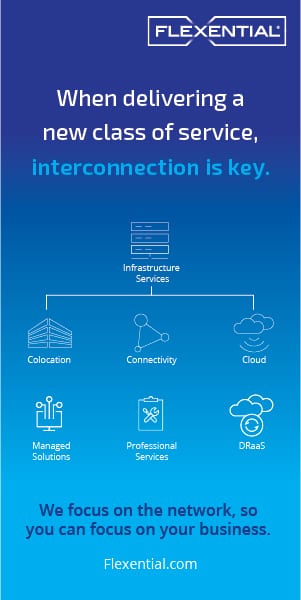
Robotic Process Automation (RPA) as a technology has come of age. In the recent past, RPA has become mainstream and continues to evolve at a rapid pace. RPA is a technology that automates repetitive and time-consuming business processes by deploying ‘bots,’ that imitate a human interacting within digital systems. RPA has evolved and is affecting multiple use cases across enterprise value-chains. In fact, the focus has now shifted from automating administrative tasks to enabling a wide range of business transformation use cases.
[emaillocker id=26087]Adding a layer of intelligence to automation through Artificial Intelligence (AI)/Machine Learning (ML), augments RPA’s capability with greater computing power. This is Intelligent Automation, which is at the core of intelligent bots that can emulate human behavior, complete tasks and handle complex use cases without human intervention. Not only does Intelligent Automation help enhance customer experience, but it also enhances productivity, lowers costs, increases accuracy, and reduces handling time.
Why Enterprises CANNOT Ignore RPA
According to Zinnov’s estimates, enterprises have spent in excess of $2.3 billion on RPA in fiscal year 2019 and this number is expected to grow exponentially by 35 to 40 percent, to touch upwards of $11 billion over the next five years. Further, the worldwide addressable market for RPA is much higher and stands at a whopping $50 billion. The RPA space is ripe with more than 50 RPA platform providers, including three unicorns. The numbers speak for themselves – no enterprise – big or small – can afford to not invest in RPA.
Which Industries Are More Mature With RPA deployments?
While RPA is being adopted across multiple industries, certain industries are more mature than others. Banking/financial services, insurance, healthcare, and retail/consumer packed goods are at the top of the RPA adoption maturity curve. Because the enterprises in these industries have already evolved in their automation journey, they are now increasingly leveraging cognitive technologies such as ML, AI, Natural Language Processing (NLP), and others to focus on true business transformation. Besides these, industries such as telecom and media, and travel and hospitality will be the next ones to reach RPA maturity.
Is a Task-based Approach the Right Way to Deploy RPA in an Enterprise?
While some organizations have taken a task-based approach to RPA adoption, a process-centric and outcome-driven approach has more of an impact on the enterprise’s top-line and bottom-line. Take the example of an insurance company that automated its claims process. Not only did this have a direct impact on enhancing customer experience, it also improved accuracy and reduced the cost of processing.
How Can Enterprises Ensure Their Deployed Automation Initiatives Succeed?
- Set the right management expectations so that there isn’t an expectation mismatch in what is considered success of automation initiatives. This can be mitigated by setting clearly defined KPIs which are measured and reported periodically.
- Ensure employee buy-in and dispel the fear of job losses, which seems to be an underlying factor in conversations around RPA. Employees’ focus need to be shifted from the fear of job loss to freeing up their bandwidth to work on more interesting, challenging, and strategic work.
- Set up robust RPA security and governance because non-compliance has the potential to hinder automation efforts by a few years.
- Building the right set of skills and capabilities and choosing between the process-first approach or the tool-centric approach. In the process-first approach, enterprises need to (DI)gitize first, (R)eengineer next, and lastly, (A)utomate – this is the DIRA approach. In the tool-centric approach, enterprises need to follow the TOPS thinking – TO: diligence in Tools Vendor Partnership and PS: Process Selection, which ensures success.
What Challenges Do Companies Face When Embarking on Their Automation Journey?
- Scarcity of tech talent with the right set of skills
- Expectation mismatch between the executing team and the management
- Lack of clarity on identifying the right work streams/processes to automate
- Lack of clear objectives and measurable outcomes
How Can Organizations Overcome These Challenges?
By prioritizing three key areas – People, Process, and Technology. This is true for all companies, irrespective of where they are on their RPA adoption journey.
People: The right business and social capital is crucial for the success of an enterprise’s automation initiatives, in addition to gaining top management buy-in. A short-term and long-term automation vision will help procure employee buy-in, which is critical when communicating the impending changes in the organization.
Process: Identifying the right processes to automate is essential for the success of an enterprise’s automation deployment. Enterprises need to choose processes that will have a high impact in terms of ROI, those that are easy to automate, or processes that fit a combination of these factors. In fact, enterprises should leverage process mining tools that can perform Automated Business Process Discovery (ABPD) to accelerate process discovery. These tools also help in procedure adherence checks as well as identifying bottlenecks.
Technology: This is the core lever of any successful automation initiative. A cross-functional team with multi-disciplinary skills is essential to leverage the power of the RPA tools that they possess. Skills in advanced technologies such as ML, Deep Learning, NLP, Natural Language Generation, etc. are critical.
How Important is Security & Governance in RPA implementation?
Enterprise-wide RPA adoption potentially touches everything that a human employee does, including accessing sensitive customer data. Therefore, Security & Governance has to be one of the top priorities for both enterprises and platform players across multiple levels, including:
- Infrastructure security to secure the application or SDLC
- Information security to protect sensitive personal and customer data
- Adherence to ISO27001 standards
- UI level security for identity and access management
- Governance issues by employing comprehensive audit trails and bot control rooms.
With RPA set to transform business processes and consequently, workplaces, as we know it, organizations cannot afford to ignore this revolutionary technology. They need to outline a robust RPA strategy with clearly defined short-term and long-term goals, chalk out an investment plan that aligns with business vision and strategy, and identify the right implementation partner to drive meaningful and impactful business outcomes.[/emaillocker]
About the Authors
 Praveen Bhadada, Partner & Global Head – Digital Transformation, Zinnov, drives the digital transformation vision for global enterprises, including vertical businesses, technology platforms, and Service Providers. In his 13 years of professional experience, Bhadada has spearheaded various market expansion and advisory projects for Fortune 500 technology companies across the world. His primary charter is to expand Zinnov’s business in the areas of IOT, Robotic Process Automation (RPA), AI/ML, Cloud and other digital technologies. In his current role, Bhadada is responsible for driving the P&L, developing business un-usual opportunities for customers, building strategy & execution plans, and understanding technology purchase behaviors. Bhadada is an alumnus of IIT, Delhi, and is certified in Finance from HBX, Harvard Business School.
Praveen Bhadada, Partner & Global Head – Digital Transformation, Zinnov, drives the digital transformation vision for global enterprises, including vertical businesses, technology platforms, and Service Providers. In his 13 years of professional experience, Bhadada has spearheaded various market expansion and advisory projects for Fortune 500 technology companies across the world. His primary charter is to expand Zinnov’s business in the areas of IOT, Robotic Process Automation (RPA), AI/ML, Cloud and other digital technologies. In his current role, Bhadada is responsible for driving the P&L, developing business un-usual opportunities for customers, building strategy & execution plans, and understanding technology purchase behaviors. Bhadada is an alumnus of IIT, Delhi, and is certified in Finance from HBX, Harvard Business School.
 Mohandoss Thulasidoss, Advisor, Zinnov is a results-oriented leader with a penchant and passion for both business and technology. He is widely respected as a strategic thinker for both businesses as well as operations. Thulasidoss is the Founder CEO of CompassMet consulting. He consults on developing a digital strategy for organizations through a unique methodology and also delivers a program to increase the business quotient of employees in organizations so that the strategy developed gets executed well on the ground. Thulasidoss has spent over 32 years across multiple Industries, and until recently, worked as SVP – Head of Vitality & Innovation for Global Services at Fidelity Investments. He has built the in-house consulting practice on Automation & Cognitive Computing in this role. Thulasidoss brings a unique combination of deep understanding of technology with a consummate understanding of the application of technologies across multiple business domains like Financial Services, Retail, Manufacturing, Energy, Media, Education, Government, Transportation, and Healthcare. Thulasidoss holds a Bachelor’s degree in Mechanical Engineering and a Master’s degree in Business Administration.
Mohandoss Thulasidoss, Advisor, Zinnov is a results-oriented leader with a penchant and passion for both business and technology. He is widely respected as a strategic thinker for both businesses as well as operations. Thulasidoss is the Founder CEO of CompassMet consulting. He consults on developing a digital strategy for organizations through a unique methodology and also delivers a program to increase the business quotient of employees in organizations so that the strategy developed gets executed well on the ground. Thulasidoss has spent over 32 years across multiple Industries, and until recently, worked as SVP – Head of Vitality & Innovation for Global Services at Fidelity Investments. He has built the in-house consulting practice on Automation & Cognitive Computing in this role. Thulasidoss brings a unique combination of deep understanding of technology with a consummate understanding of the application of technologies across multiple business domains like Financial Services, Retail, Manufacturing, Energy, Media, Education, Government, Transportation, and Healthcare. Thulasidoss holds a Bachelor’s degree in Mechanical Engineering and a Master’s degree in Business Administration.






